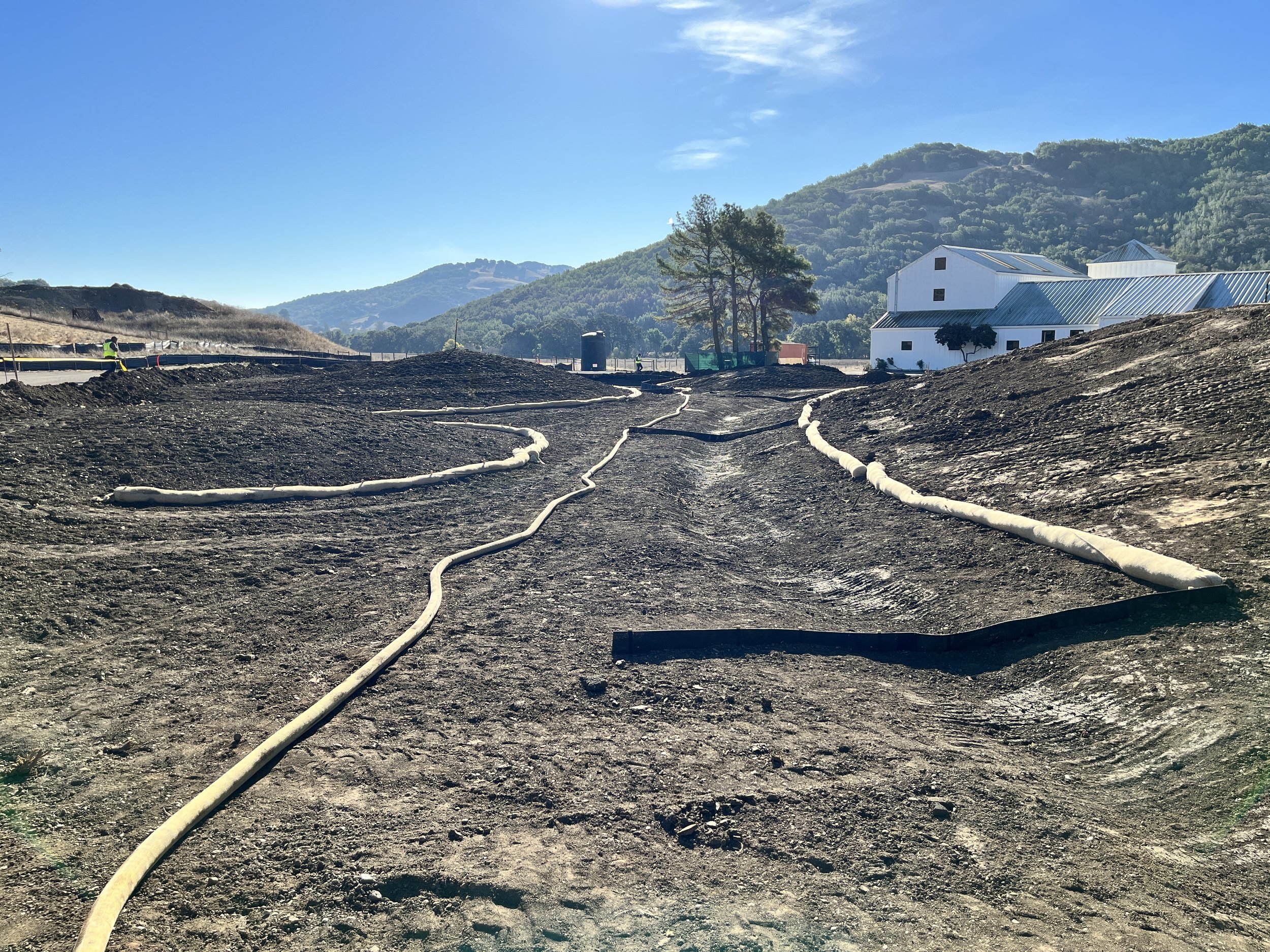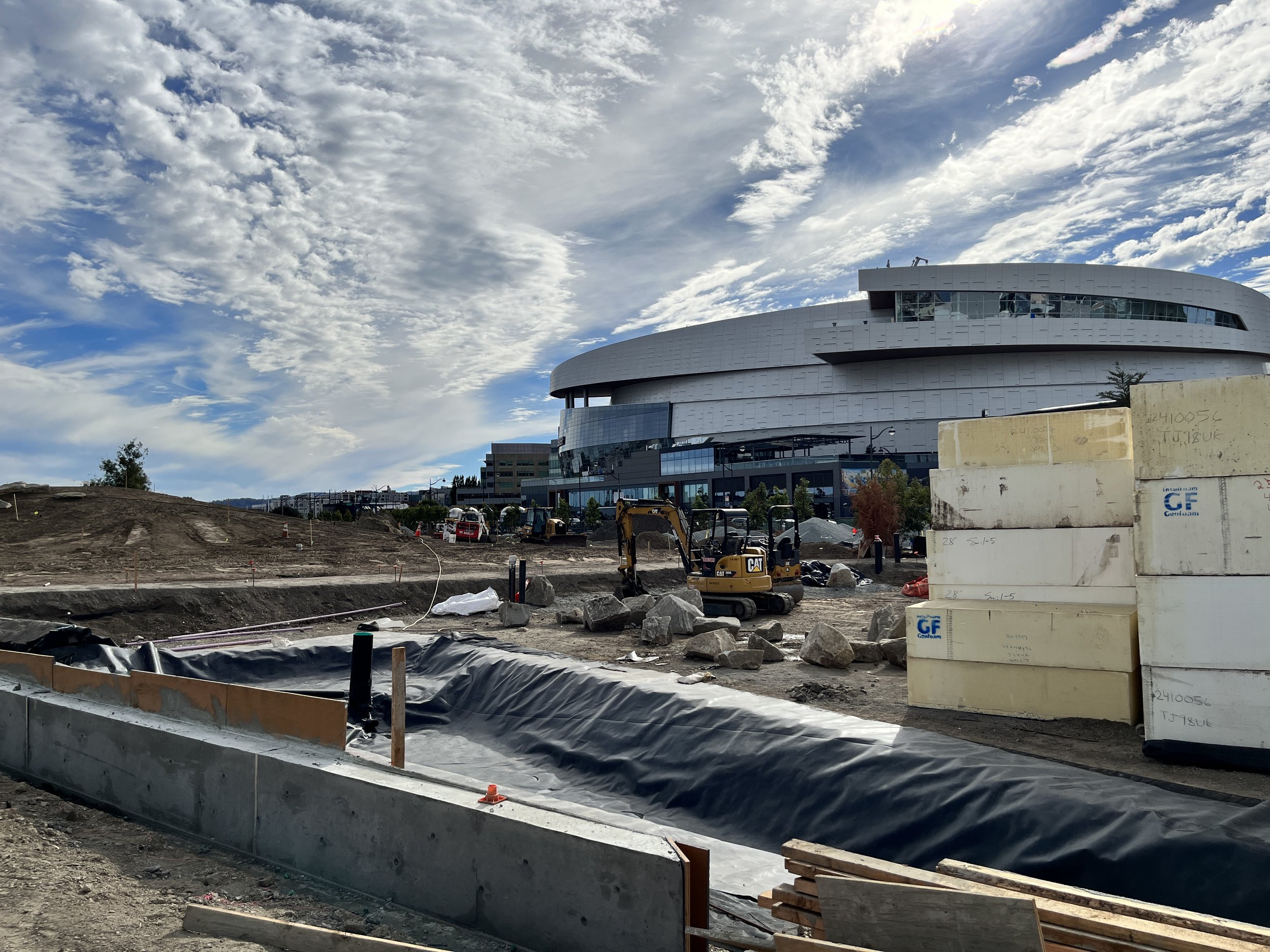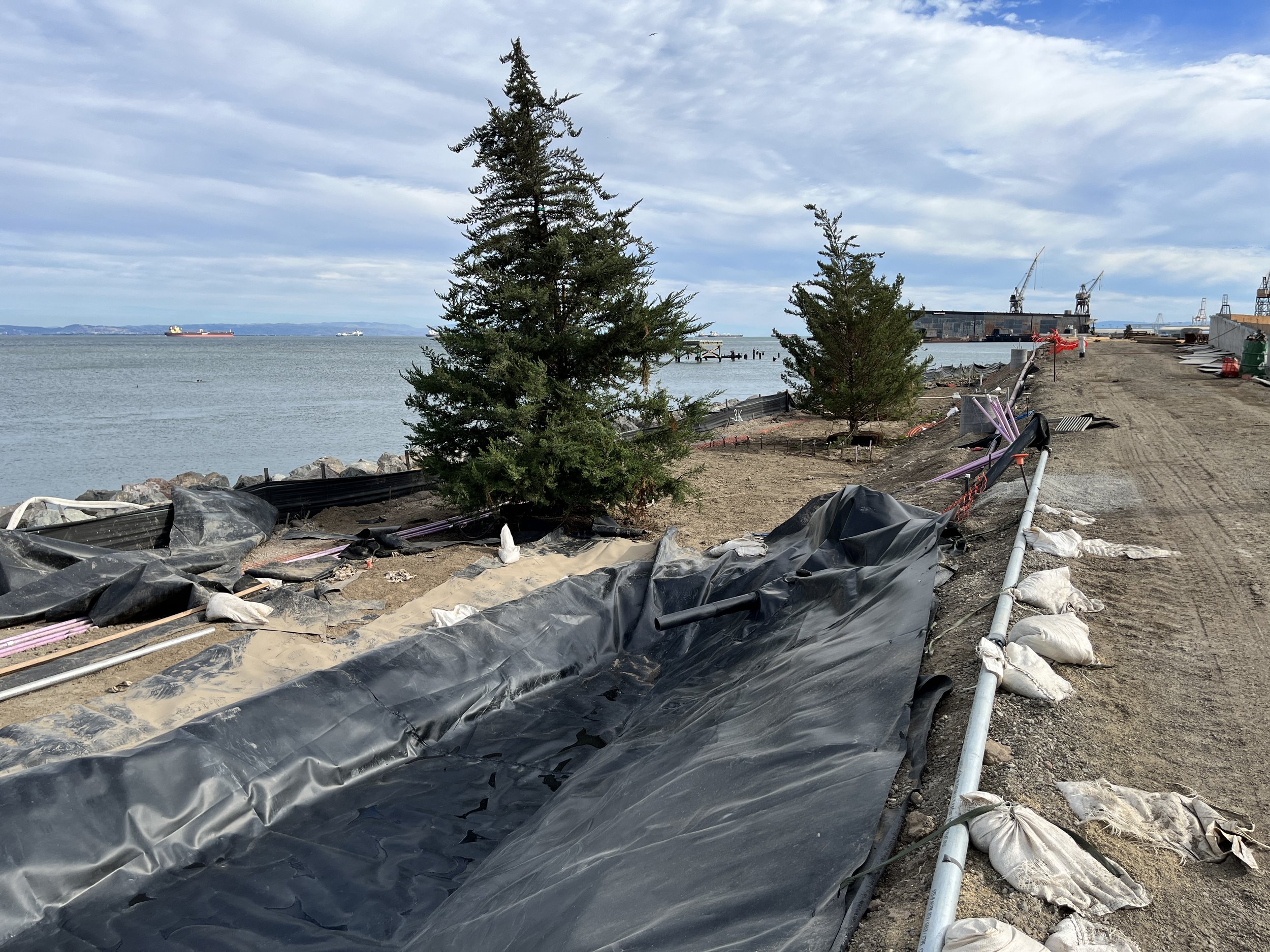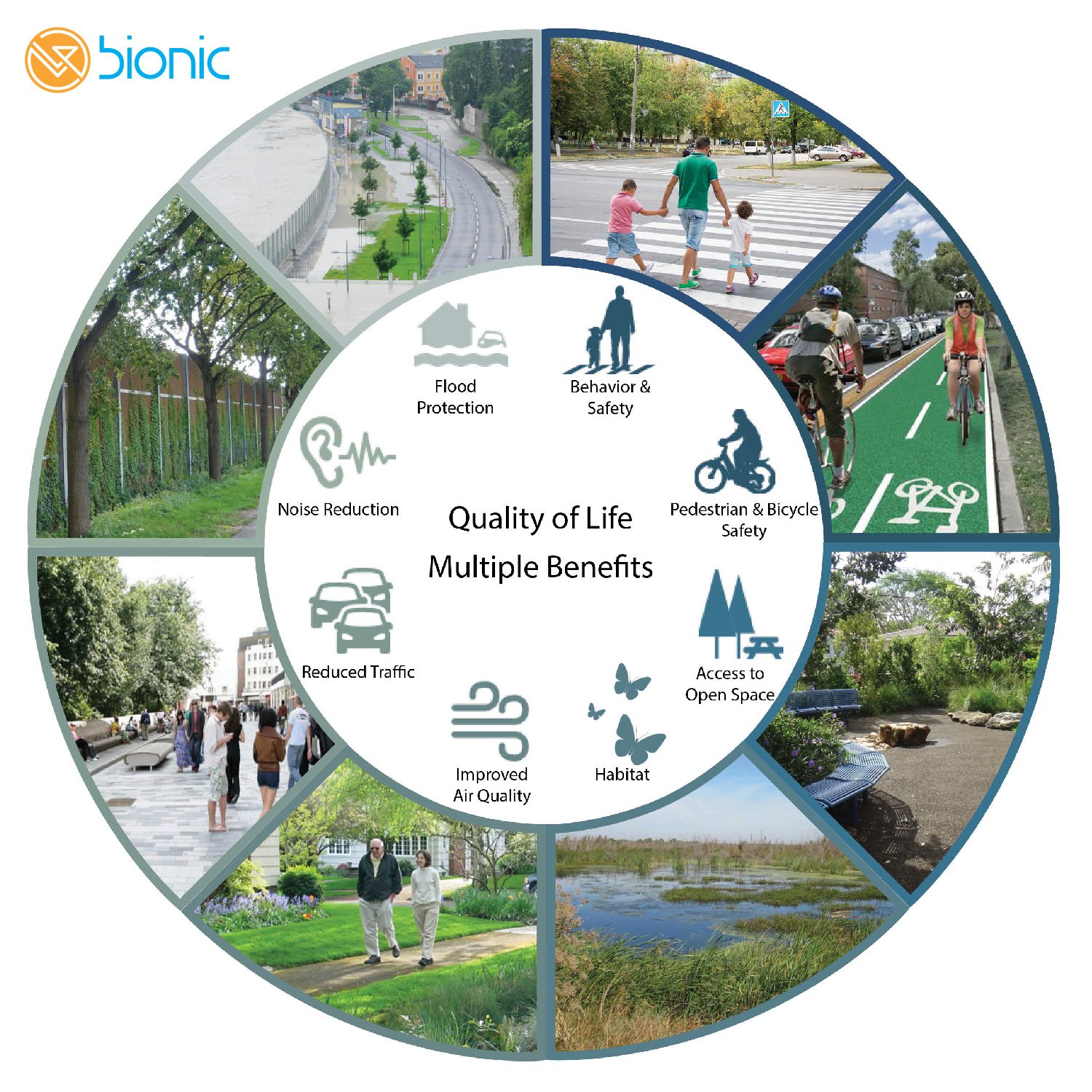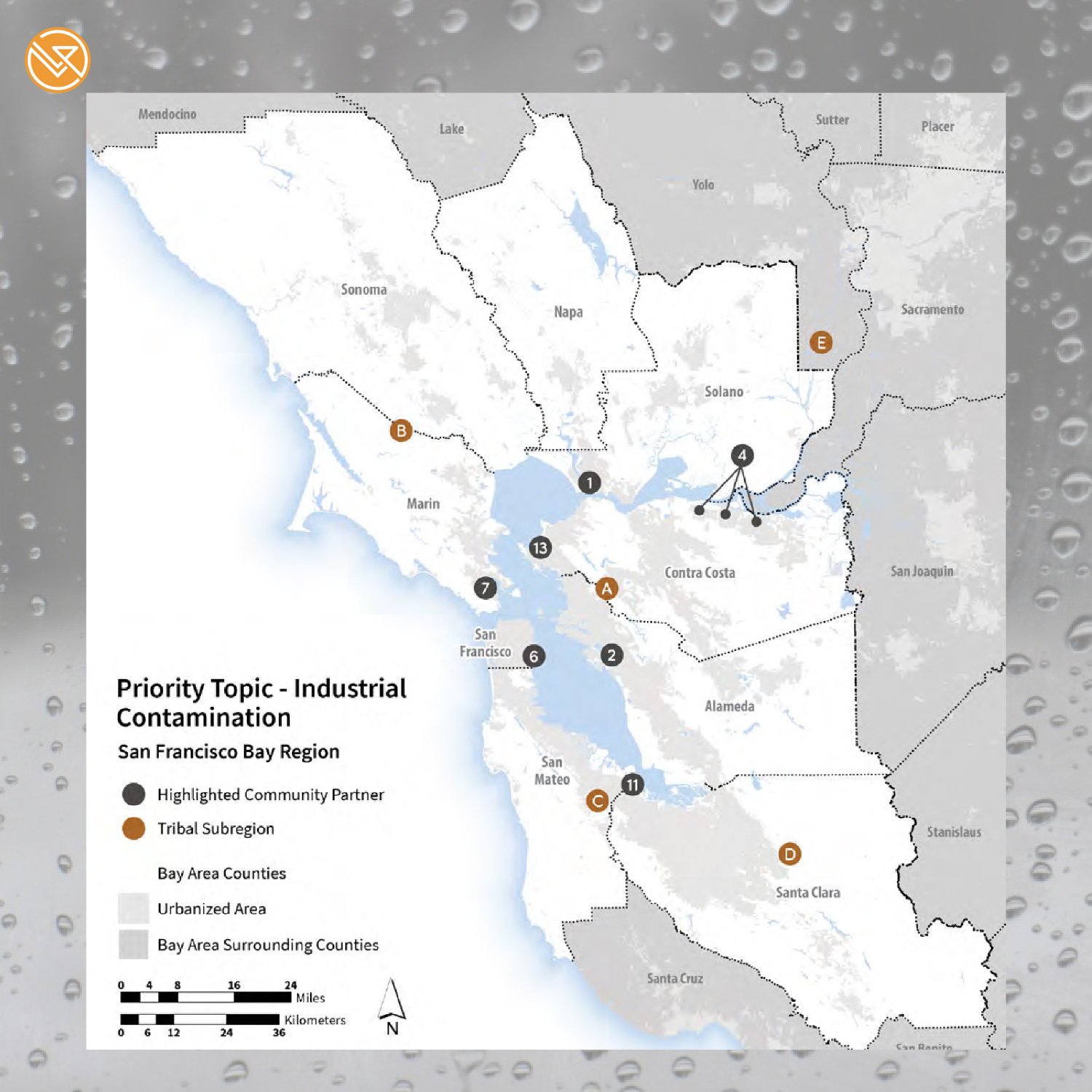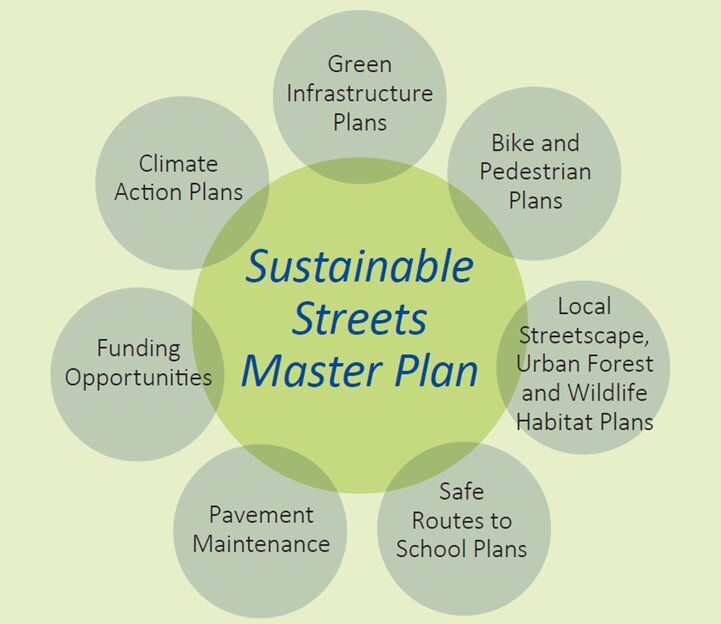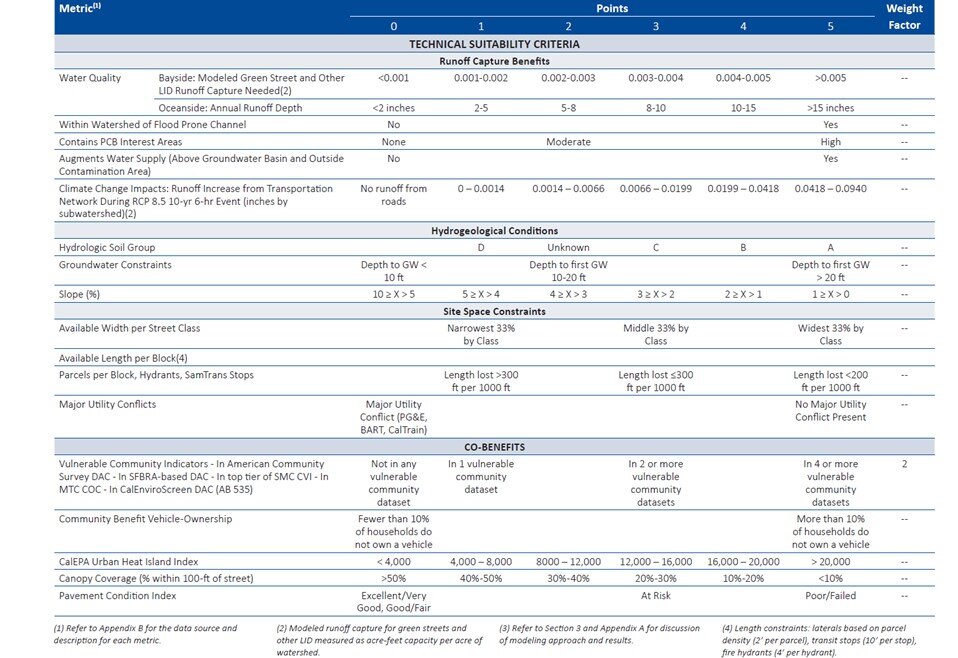2023 has been a busy, busy year for construction projects at Lotus Water, and as the year wraps up, here’s a sneak peek on construction progress.
Sonoma Ranch Institute - Sonoma County, CA
Sonoma Ranch Institute—a vision for a learning laboratory of design, regenerative agriculture, and sustainable land stewardship—is deep into the construction of Phase Two, which includes grading the majority of the site, establishing new road alignments, installing site utilities and irrigation, and constructing new conveyance swales and bioretention basins. The site has made significant progress and the contractor is racing to finish work within the onsite stormwater reservoir before El Niño kicks into full gear this rainy season. This 7 acre-foot reservoir, adapted to meet the site’s sustainability goals of self-sufficient water use, will eventually capture and store rainfall to meet sitewide irrigation and fire prevention water needs.
California College of the Arts - San Francisco, CA
A year after the California College of the Arts (CCA) extension campus in San Francisco resumed again in 2022, construction is humming along with the campus’ massive indoor-outdoor structure rising above the entire superblock. Surrounding street improvements for the project have also been approved after several rounds of review with the City. Check out the live-feed cam of the campus’ ongoing progress here!
Mission Bay Bayfront Park P-22 - San Francisco, CA
Part of the open-space network along the new Mission Bay waterfront, Park P-22 has made significant progress in grading the site and adding terrain through geofoam and backfill. All bioretention basins have been excavated and lined, while trees and planting installation for the basins and park have begun to take shape in time for the start of the Warrior’s regular season.


